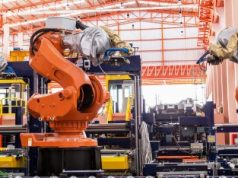Process Lifecycle Management is the set of techniques used to track and evaluate all stages a product and its processes go under during the manufacturing cycle.
The manufacturing industry has seen quite a lot of substantial development in this field and it is still being researched and improved upon. From manual record keeping and all things manuals we have come as far as automation and introduction of robots to the factory floor.
However, one question still remains, what is next? Is there anything we can move on to now?
The leading giants in PLM have realized what the drift is in this context and are already on a move to ride the tide.
The next big thing is the cloud for PLM.
There are multiple benefits of this migration:
- Access:
Storing your PLM data on the cloud will provide access to all parties involved and helps them update and track progress and bottlenecks better than ever before.
- Availability
Clouds will make PLM interface and data available from almost any imaginable location and it does ease a lot of things for the management teams and offshore partners.
- Synchronicity
Data is updated across all ends at the same time and everybody has access to the latest copy of the information. This enforces better transparency and makes moving the process ahead quite easy.
- Blockchain Technology
One could easily couple the blockchain technology with the cloud interface thus enabling a trustworthy record of all actions taken across the PLM pipeline and processes.
- Data
The data generated during the day to day transactions and actions at the PLM interface is a gold mine for the analysis teams. It helps in spotting the origin of bottlenecks and other failures. It makes taking important decisions more fact-based than speculated or guessed.
Considering what the cloud brings to the table, it is not an overstatement that The Cloud is the future of PLM in Manufacturing!









